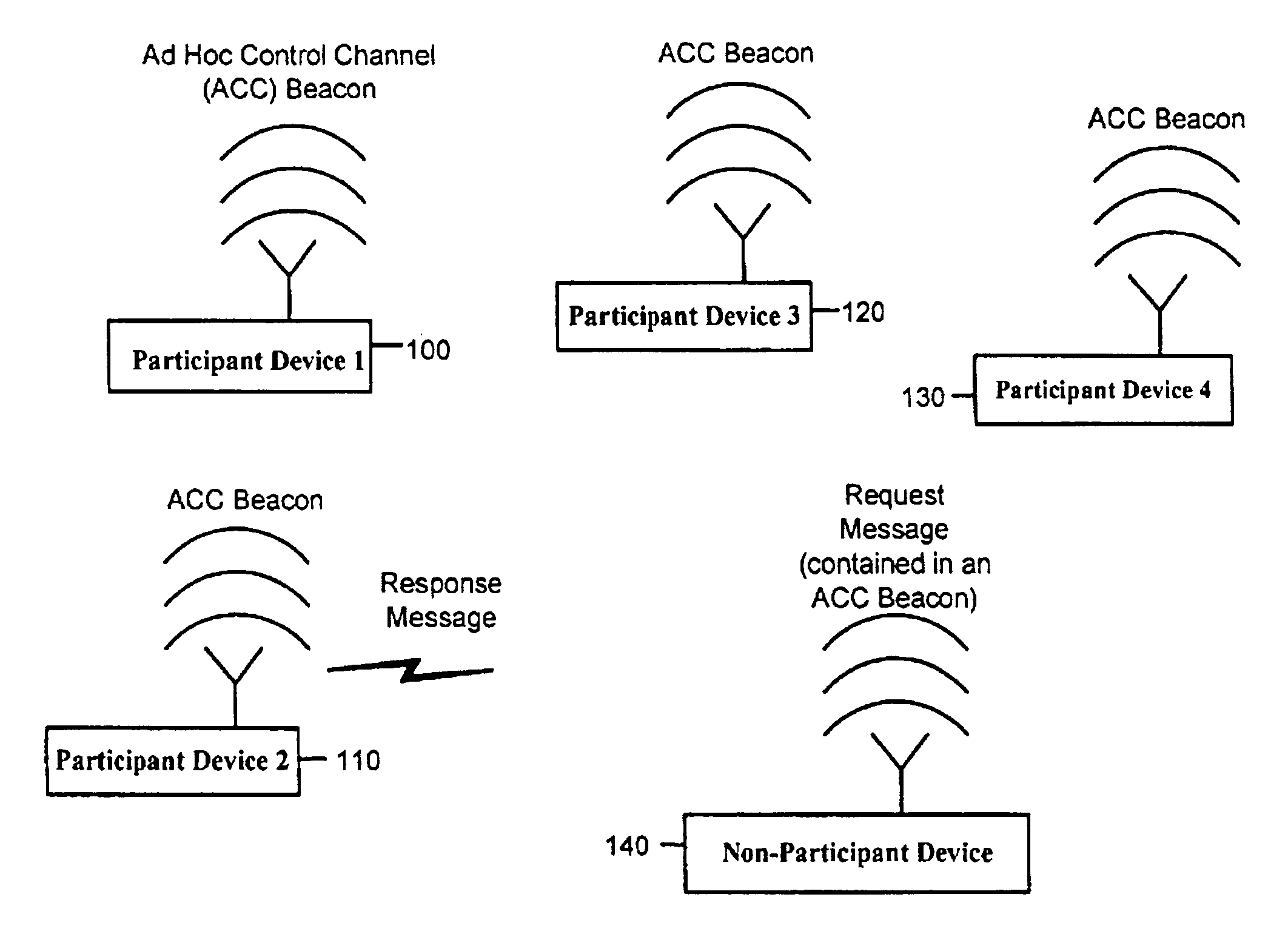Ad-hoc control protocol governing use of an unlicensed or shared radio frequency band
a radio frequency band and control protocol technology, applied in the field of ad-hoc control protocols governing the use of unlicensed or shared radio frequency bands, can solve the problems of reducing the quality of service, affecting the reliability of services, and reducing the service life of unlicensed bands, so as to achieve more reliable and enjoyable effects
- Summary
- Abstract
- Description
- Claims
- Application Information
AI Technical Summary
Benefits of technology
Problems solved by technology
Method used
Image
Examples
Embodiment Construction
[0017]In an unlicensed or shared frequency band, it is inevitable that two or more of devices will be transmitting at the same time. There is, therefore, a high likelihood that they will interfere with each other. When interference occurs, a signal from one device to another may not be received properly, causing the source device to retransmit (therefore reducing throughput), or possibly entirely destroying the communication link between two communication devices.
[0018]Managing an unlicensed band may involve minimizing interference and maximizing spectrum efficiency. Minimizing interference is expressed in terms of signal-to-noise ratio (SNR), bit error rate (BER), etc. Maximizing spectrum efficiency is expressed as data rate per bandwidth used per area (bps / Hz / m2) or as a number of “satisfied” users, where satisfied is based on meeting certain performance criteria such as: data rate, latency, jitter, dropped sessions, and blocked sessions. A control protocol is useful to avoid inte...
PUM
 Login to View More
Login to View More Abstract
Description
Claims
Application Information
 Login to View More
Login to View More - R&D
- Intellectual Property
- Life Sciences
- Materials
- Tech Scout
- Unparalleled Data Quality
- Higher Quality Content
- 60% Fewer Hallucinations
Browse by: Latest US Patents, China's latest patents, Technical Efficacy Thesaurus, Application Domain, Technology Topic, Popular Technical Reports.
© 2025 PatSnap. All rights reserved.Legal|Privacy policy|Modern Slavery Act Transparency Statement|Sitemap|About US| Contact US: help@patsnap.com



